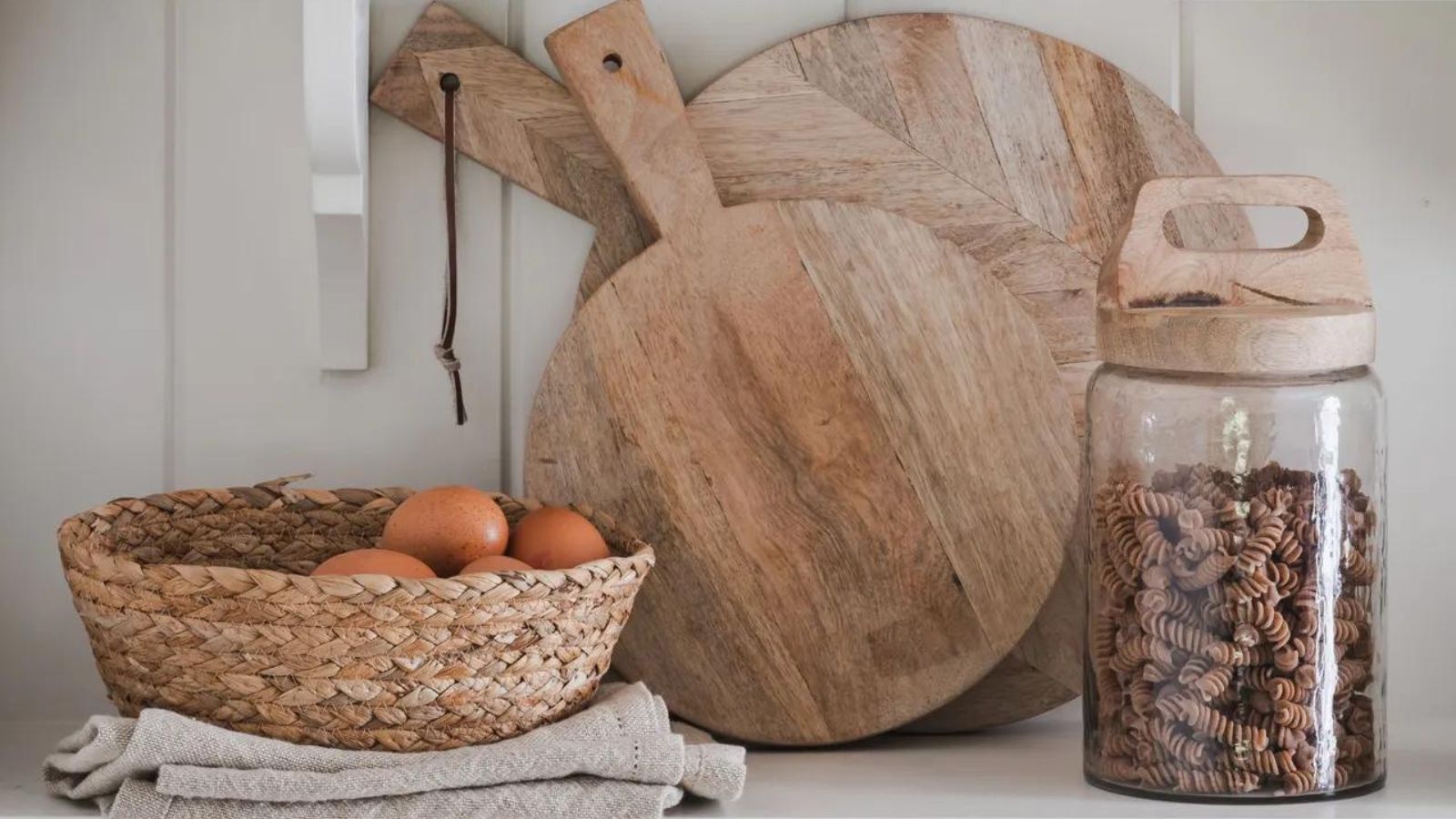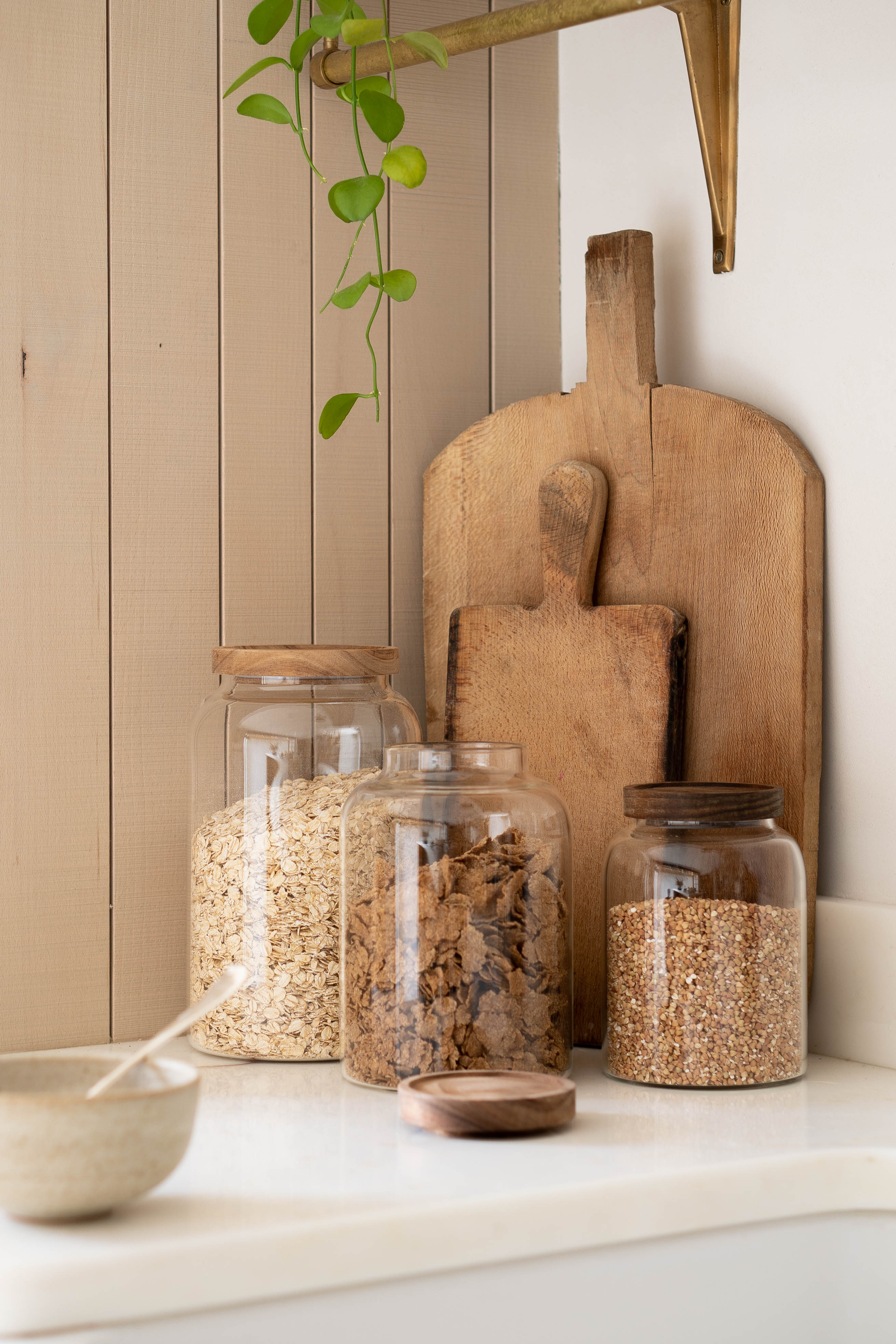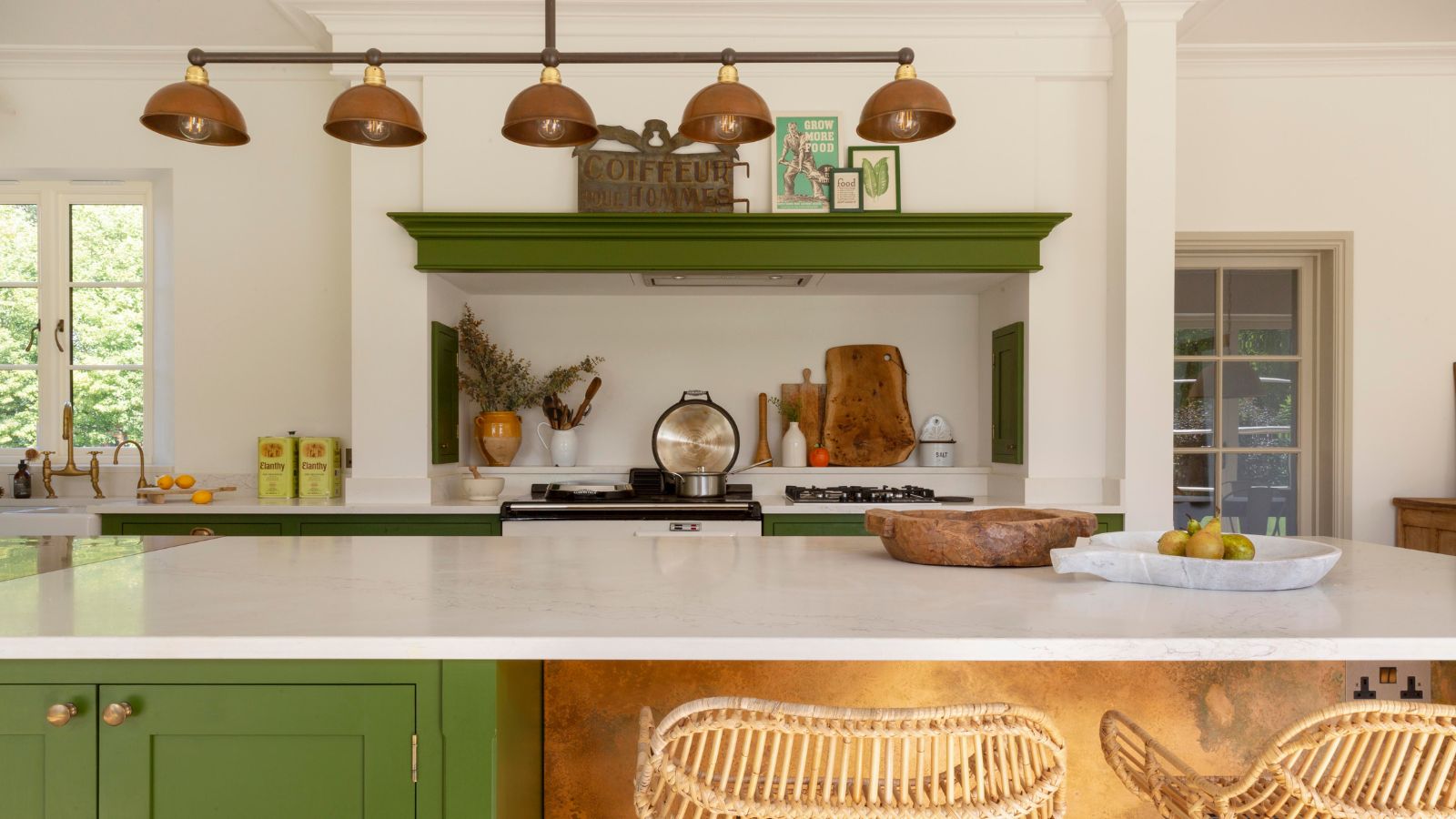How to care for a wooden cutting board – 3 expert tips to clean and preserve yours
Discover how to care for a wooden cutting board the professional way


Thomas Litten
Knowing how to care for a wooden cutting board (the right way) comes down to more than sanitary details. While having a safe food preparation space is essential, the humble chopping board is more than just a practical tool; you need to ensure its aesthetics are taken care of too as part of the process if it is to last.
Because while cleaning a kitchen begins with a naturally safe and spotless wood cutting board, its looks do indicate its overall health, and this is no longer a practical element to hide away in your kitchen cabinets. Instead, a wooden cutting board is to be shown off – everybody from Shea McGee to Joanna Gaines' Magnolia Market appreciate their natural beauty.
The good news is that it's possible to preserve a wooden cutting board for years to come, but you need to know how to take care of it properly. These steps will leave you with a stain-free board that will continue to make a (sanitary) statement in your kitchen.
How to care for a wooden cutting board
'Caring for a wooden cutting board comes down to two things: cleaning and conditioning,' says Spokane-based professional chef Sylvia Fountaine. 'You want your cutting board to be a sanitary surface for preparing food, and you also want to maintain the natural beauty of the wood,' she adds. This is how to achieve both.

1. How to deep clean a wooden cutting board
To clean your wooden cutting board professionally, you will need soap, hydrogen peroxide, and a scrub brush (such as this one from Amazon).
'Using your scrub brush, scrub away any stuck-on food or stains with hot, soapy water and rinse,' Sylvia says. 'Then, using a spray bottle, spritz the board with hydrogen peroxide – I like this more than commercial sanitizers, but that would work too.'
Sylvia explains that the peroxide will start to bubble and foam – this is a sign that it's working and getting rid of any bacteria. After this, she suggests rinsing the peroxide and giving the cutting board a wipe with a dry cloth. We like Lysol, which you can also buy from Amazon.
2. Avoid water-damaging a wooden cutting board
'Leaving your wooden cutting board in water can make it warp, so dry it as much as possible before allowing it to air dry, and never leave it in the sink,' Sylvia adds.
Alex Adgar, the designer and founder of Tormar emphasizes the chef's warning, adding that wood is a naturally porous material, so leaving it in the sink will lead to water damage. 'As long as your cutting board is never left standing in water and oiled regularly, it will last a lifetime,' he says.
3. Condition a wooden cutting board
After washing, Alex and Sylvia both note the importance of conditioning a wooden cutting board. 'When we have dry skin, we use lotion, and for a natural material like wood, it's the same thing- without conditioning, it gets dry, tight, and cracked,' Sylvia says.
While this may seem like an extra task, the experts suggest that the conditioning step is the secret to preserving its lifespan.
'You can use simple mineral oil and massage it into the wood, giving it a nice depth of color and wiping away the excess oil with a clean cloth. Your cutting board will be smooth, rich in color, and ready for use,' Sylvia explains.
FAQs
How do you clean a wooden cutting board naturally?
You can clean a wooden cutting board without cleaning products. As with many similar surfaces, cleaning with vinegar works to clean and sanitize them effectively. Start by wiping any debris off the cutting board, then soak a clean cloth in white vinegar; squeeze it out gently, then wipe it over the surface of the board. Allow to sit and soak for five to 10 minutes before rinsing.
To remove stains or odors, while the vinegar is soaking in, you can clean with baking soda and lemon juice: simply sprinkle the damp vinegar-soaked board with baking soda or salt, take half a lemon, pulp side down and rub it vigorously across the surface. Rinse thoroughly and allow to air dry before conditioning the wood.
How often should I oil my wooden cutting board?
You should oil a wooden or bamboo cutting board at least once a month to prevent it from drying out and cracking. If you use your cutting board frequently, you may need to oil it more often, even every two to three weeks. Regular oiling helps to maintain the board’s moisture balance, prevents it from absorbing too much water and keeps it resistant to bacteria and warping.
Can I use vegetable or olive oil to oil my cutting board?
It's not recommended to use olive oil or vegetable oil to oil your cutting board because these oils can go rancid over time, leaving an unpleasant smell and potentially affecting the taste of food prepared on the board.
Instead, use food-grade mineral oil or a specialized cutting board oil that is designed to penetrate the wood fibers and provide long-lasting protection. We like this Velona Food Grade Mineral Oil from Walmart.
Sign up to the Homes & Gardens newsletter
Design expertise in your inbox – from inspiring decorating ideas and beautiful celebrity homes to practical gardening advice and shopping round-ups.

Megan is the Head of Celebrity Style News at Homes & Gardens, where she leads the celebrity/ news team. She has a history in interior design, travel, and news journalism, having lived and worked in New York, Paris, and, currently, London. Megan has bylines in Livingetc, The Telegraph, and IRK Magazine, and has interviewed the likes of Drew Barrymore, Ayesha Curry, Michelle Keegan, and Tan France, among others. She lives in a London apartment with her antique typewriter and an eclectic espresso cup collection, and dreams of a Kelly Wearstler-designed home.
- Thomas LittenFreelance Writer
-
 7 underrated kitchen features that are sure to make your life easier, according to interior designers
7 underrated kitchen features that are sure to make your life easier, according to interior designersFrom game-changing storage to functional decor
By Molly Malsom
-
 These 5 plant species will help to attract and nurture an underrated nighttime pollinator that's crucial to every yard
These 5 plant species will help to attract and nurture an underrated nighttime pollinator that's crucial to every yardDiscover the best plants for attracting moths to your yard
By Ciéra Cree